Lead Paint Inspection
What is Lead Exposure?
Lead exposure is an all too common occurrence that can have a variety of sources. While lead paint is perhaps the most well-known source of lead exposure, lead is present in soil, drinking water, dust, and certain products that can easily enter the home and cause health problems. It is important to be aware of potential hazards and safeguard your home—schedule a lead inspection with us!
Call 1-800-241-0133 to schedule a home lead inspection in your area!
Children are especially susceptible to lead poisoning because they have a habit of putting their hands in their mouths. Yards and playgrounds can have high levels of naturally occurring lead, which can be tracked into the home or directly ingested by young children.
High levels of lead can also be found in drinking water. While there are laws in place to protect citizens from contaminated water, old and corroded pipes can transfer lead into the water. Lead also commonly enters the water through lead-based solder that is used to seal faucets and fixtures. Repeated and prolonged exposure to hot water can allow significant amounts of lead to be leaked into drinking water and cause unsafe levels.
Certain products have also been shown to have high levels of lead that can lead to exposure. Antique toys, furniture and costume jewelry are commonly covered in lead-based paint and constructed using lead-based materials. These family heirlooms might actually pose a danger to you and your family. In addition, cosmetics and food containers have also been found to cause lead exposure. This means that both your body and your food may be absorbing lead without your knowledge.
Exposure to just one of these common sources of lead can be enough to cause problems, but just imagine if your household is accumulating lead from a combination of sources. It is all too easy to track in lead from the outdoors, create dust that can be inhaled or come into contact with lead through a variety of different sources. Even slightly elevated levels can cause real and lasting problems for your household, which makes it important to assess your risk and take the necessary steps to reduce lead exposure.
How We Perform Our Lead-Based Paint Inspection
A lead inspection involves a sampling method and laboratory testing to determine whether lead is present. Typically, the inspection focuses on identifying any lead-based paint. If you are thinking of buying a home or making renovations to a house built before 1978, you will want to invest in an inspection with a licensed professional. This is especially important if young children are present or living in the home.
Paint Chip Sampling
Paint chip sampling is a disruptive process that may result in the discharge of trace amounts of lead dust. Although it is ideal to collect paint chip samples from unnoticeable areas, the occupier is always informed if paint chip sampling is required.
The quick summary of field-testing results will list the room location, how the sample was collected, and the surface area of the sample, the results and whether lead amounts detected comply with national standards
Methods
Plastic Sheeting: A clean sheet of plastic is placed under the area to be sampled to catch any paint chips not collected by the collection device. The plastic sheet is disposed of off-site following the procedure.
Glovebag: A sheet of plastic or large plastic baggie is taped to the area to be sampled, and the scraper, collection device, and shipping container are housed inside the plastic. This ensures the area is completely sealed. Another sheet of plastic is placed under the area to capture any debris dislodged during the sheet/baggie removal.
Paint Sample Collection
A sample of 2–4 square inches of paint is all that is needed—the typical approach is to scrape a sample off the surface, removing all layers of paint but none of the substrate. A heat gun can be used to soften the paint first. Once enough paint has been removed, the samples are placed in a container to be shipped to a laboratory recognized by the Environmental Protection Agency (EPA) National Lead Laboratory Accreditation Program.
Cleanup and Repair
- Any dust is thoroughly cleaned up and wiped away.
- Surfaces will be repainted if necessary.
- Inspectors must wash their hands immediately after the sampling process, so we may request access to your bathroom.
XRF Sampling
An XRF device assesses lead in paint by sending high intensity X-rays and gamma rays into the paint. Lead atoms are recognized by the instrument and are translated into a measurement of the quantity of lead in the paint. When chemicals in the kit are exposed to lead, a chemical reaction occurs that detects the presence of lead in paint.
Safety Precautions
Proper safety precautions are taken at all times to minimize exposure to hazards. Protective clothing, eye wear, and gloves are worn, and the device is never pointed at another person.

Scaled chipping patterns on a window found during a lead inspection in Ohio
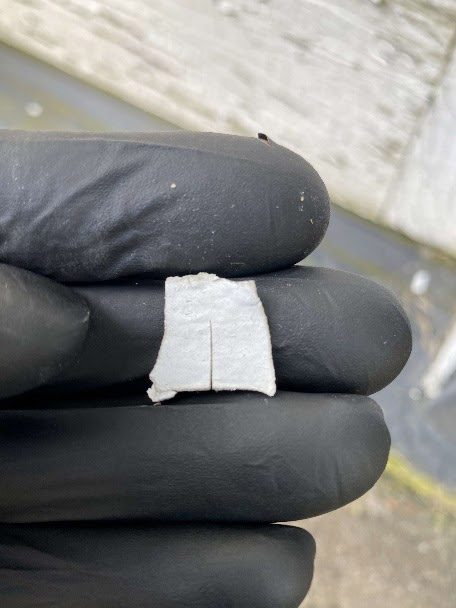
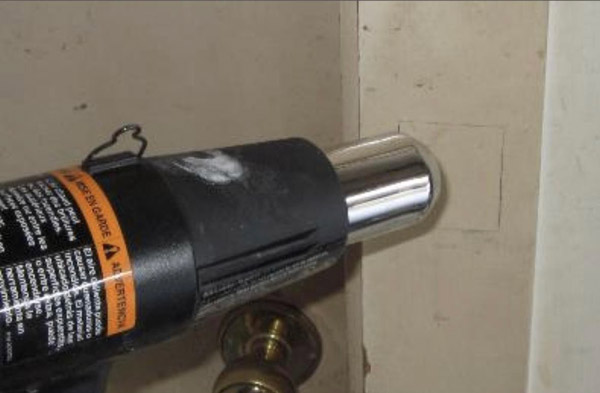
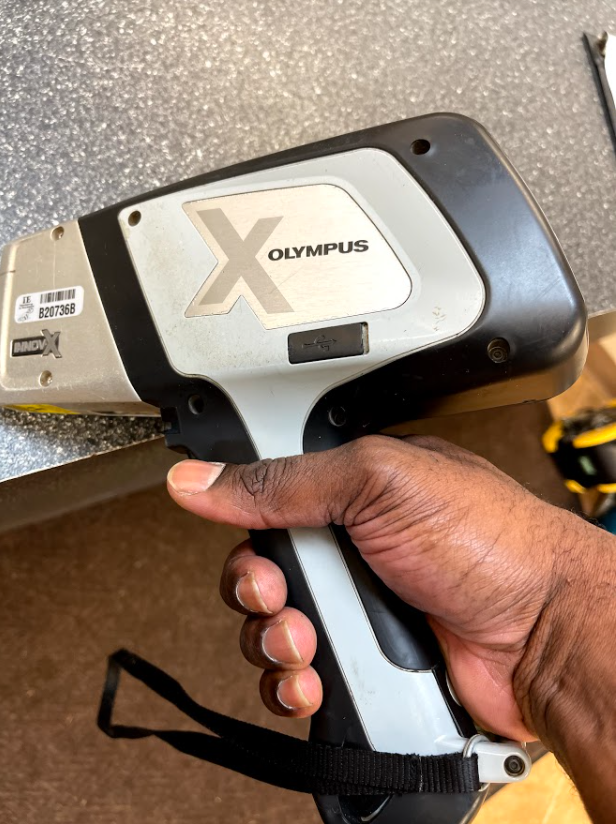
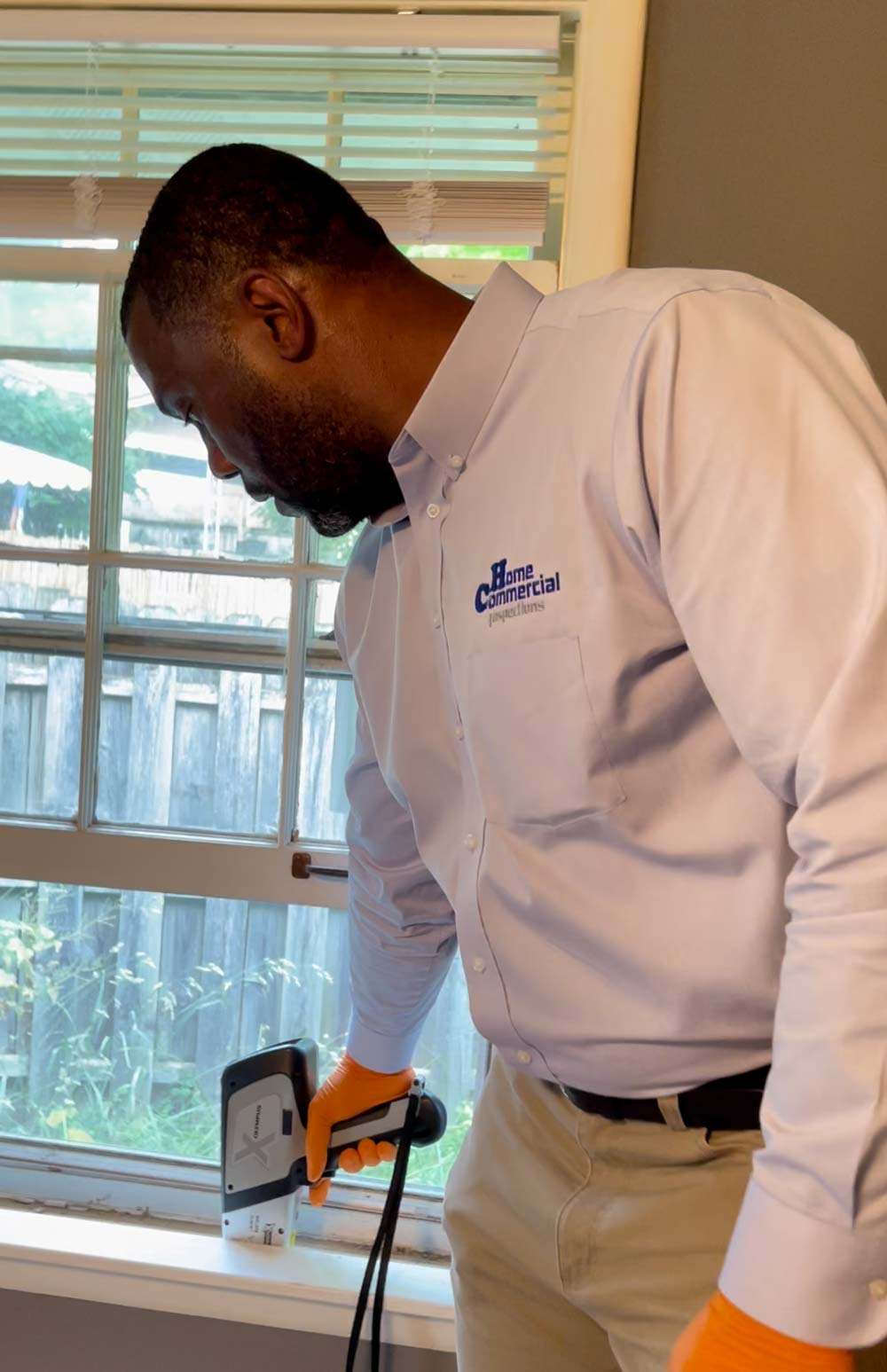


Sample Lead-Based Paint Inspection Report
A lead-based paint inspection report is a detailed document that outlines the what, where, and how of the inspection process. The report will include a summary of the scope of services, what testing methodology was used, and a complete narrative of the inspection, as well as findings and recommendations.
The quick summary of field-testing results will list the room location, how the sample was collected, the surface area of the sample, the results, and whether lead amounts detected comply with national standards.
To view a full sample of a lead risk inspection report, click here.
Homebuyers Assistance and Lead-Exposure Inspections
NACA
The Neighborhood Assistance Corporation of America (NACA) is a non-profit organization that works to help those who may be considered as subprime customers secure fair mortgage loans and enjoy the benefits of homeownership. They are dedicated to building strong neighborhoods through homeownership and putting an end to predatory lending. NACA can also provide assistance with lead-exposure inspections and funding for renovations to ensure a safe and healthy household.
The OHFA
The Ohio Housing Finance Agency (OHFA) is another great organization that works to provide safe and affordable housing for Ohio residents who may be suffering from a variety of financial hardships. The organization works to protect and assist both homeowners and renters. If you need help testing for and removing sources of lead from in and around your home, OHFA may be able to help you qualify for a lead inspection in Ohio.
Homeport
Homeport is another organization that supports Ohio residents through a variety of programs that help to make homeownership more accessible. Interested parties must meet certain eligibility requirements and fill out an application that will be considered on a first-come, first-serve basis. Homeport offers a series of Homebuyer Education classes, which will greatly help you determine whether or not you need a lead inspection in Ohio.
Should I Have My Home or Commercial Building Inspected for Lead-Based Paint?
The older your home is, the more likely it is to contain lead-based paint. In 1978, the federal government banned the use of lead-based paint. If your home was built after 1978, typically you should not have to worry about lead poisoning, but homes built before this important date should be inspected.
- 87% of homes built before 1940 contain lead-based paint
- 86% of multi family structures per-1976-1980
- 69% of homes built between 1940-1959 contain lead-based paint
- 24% of homes built between 1960-1977 contain lead-based paint
While lead-based paint has been banned for decades, millions of homes still contain lead paint. Often, it is hidden behind layers of additional paint that have accumulated over the years. If the paint is intact, it may not pose any immediate problems. Any paint that is chipping, flaking, and deteriorating poses a serious risk and should be taken care of as soon as possible. Schedule a lead inspection for your Ohio home.
Common Places Where Lead Is Found
Lead is a naturally occurring substance that can occur in high concentrations. However, lead can be found in certain common household products, including paint, water pipes, food containers, and cosmetics. Lead can be tracked into the home from outside sources, but lead paint is the most pervasive source of lead found during an inspection.
Lead-based paint was widely used throughout Ohio homes prior to 1978, and it is most commonly found on exterior surfaces, porches, windows, doors, trim, and other finishing details. Unfortunately, these areas are also subject to wear and tear, making them a common source of hazardous lead dust. These areas are especially dangerous for small children who have a habit of chewing on these surfaces.
Lead is also commonly found in yards and playgrounds. High levels of lead come from toys and play equipment that is covered in lead paint. Some lead is naturally found in soil, and gasoline and other industrial products are also contaminants. Children are at risk of inadvertently ingesting lead through paint and soil and tracking lead-laced dust into the home, which can prolong exposure.
Unfortunately, lead can also seep into drinking water through old pipes. Older homes may have corroded pipes with lead soldering that can break down and enter the water. The side effects of drinking water that is high in lead can be permanent and debilitating.
In the United States, there are strict regulations about using lead in products, but that doesn't eliminate your risk of exposure through common household objects. Old toys and costume jewelry can contain lead paint, and mini-blinds, canned foods, and dishes from other countries can also contain lead.
Being aware of the various sources of lead is the first step to creating a safe and clean household and protecting your family.
What Are the Dangers of Lead?
While adults can suffer from lead poisoning, small children are at the greatest risk. Lead is highly toxic, and even slightly elevated amounts in the bloodstream can cause real and lasting consequences. Health and behavioral problems can range from damage to vital organs, learning disabilities, seizures, headaches, nausea, and even death. Perhaps even more frightening is the fact that some children who are experiencing lead poisoning won't show any obvious symptoms.
What Can I Do Today To Lower My Risk of Lead Exposure?
If your home was built before 1978, it is important to schedule a lead-based paint inspection as soon as possible. At Home & Commercial Inspections LLC of Ohio, we will schedule a lead inspection for a convenient time so that it doesn't interfere with your busy life. In the meantime, there are practical steps you can take to immediately reduce exposure to lead.
Start by wiping down surfaces with a wet paper towel and be sure to safely dispose of the towel. If you see any loose paint chips, carefully remove them and clean the surface. Next, be sure to thoroughly vacuum and mop carpets, upholstery, and smooth floors. This will eliminate any lead dust that may be spreading throughout your home. A vacuum with a HEPA filter is your best option and well worth the investment.
It is also important to reduce the amount of dirt and dust that is tracked into the home. Be sure to put doormats by entryways and encourage your family to leave their shoes at the door. If they have picked up lead particles while enjoying their favorite hobbies or playing at the park, a lot of that dust can be left at the door before it has a chance to spread throughout the entire home.
You may also want to remove any antique toys or products from other countries from the home. Candies, blinds, and ceramics from other countries have been found to contain high levels of lead. Be sure to do your research and know what you are buying so that you avoid putting your family in danger.
Just remember that these steps are only temporary fixes. While keeping your home clean and dust-free will help reduce your exposure, it won't address the underlying problem.

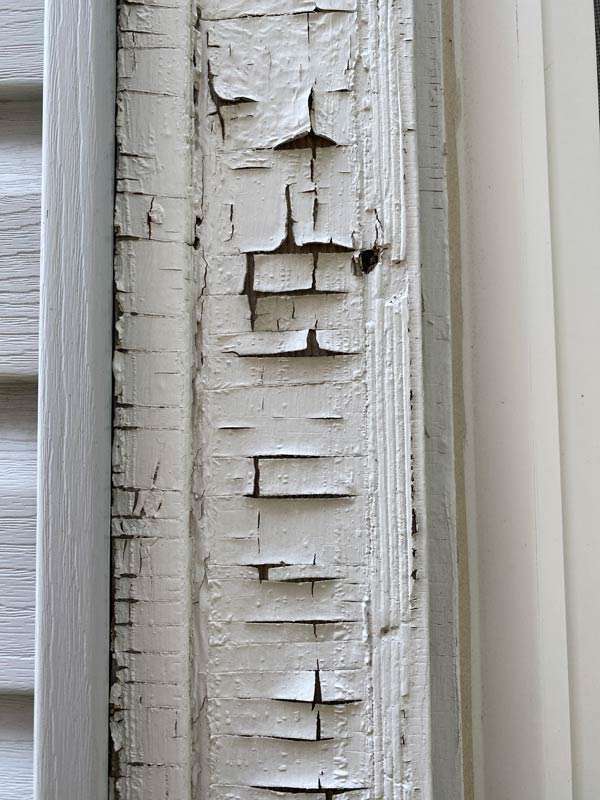
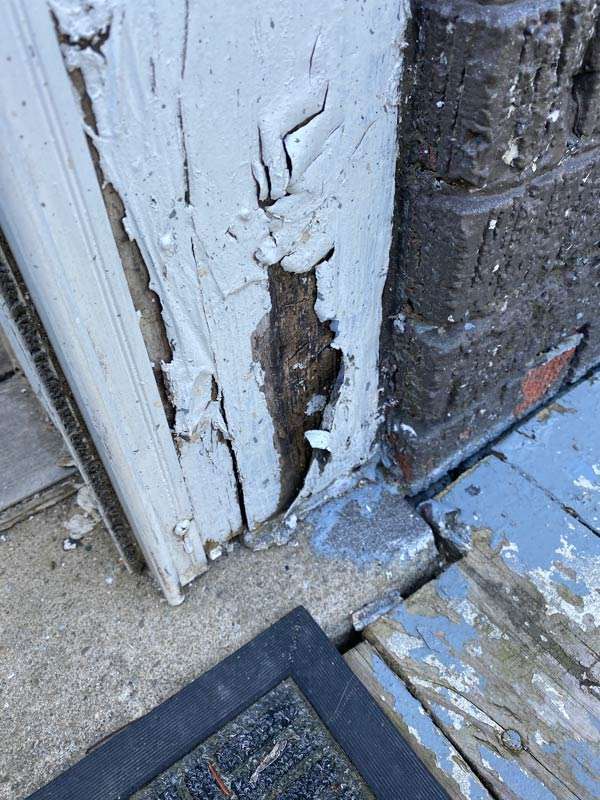
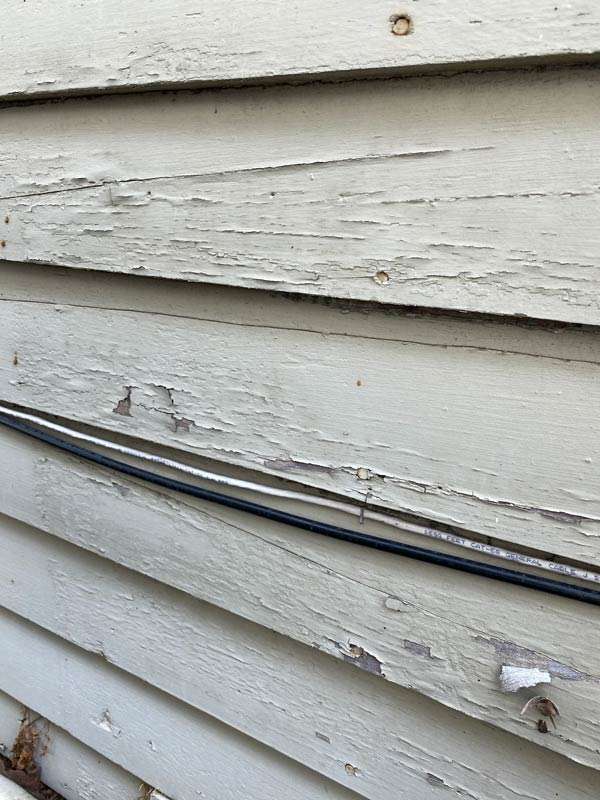
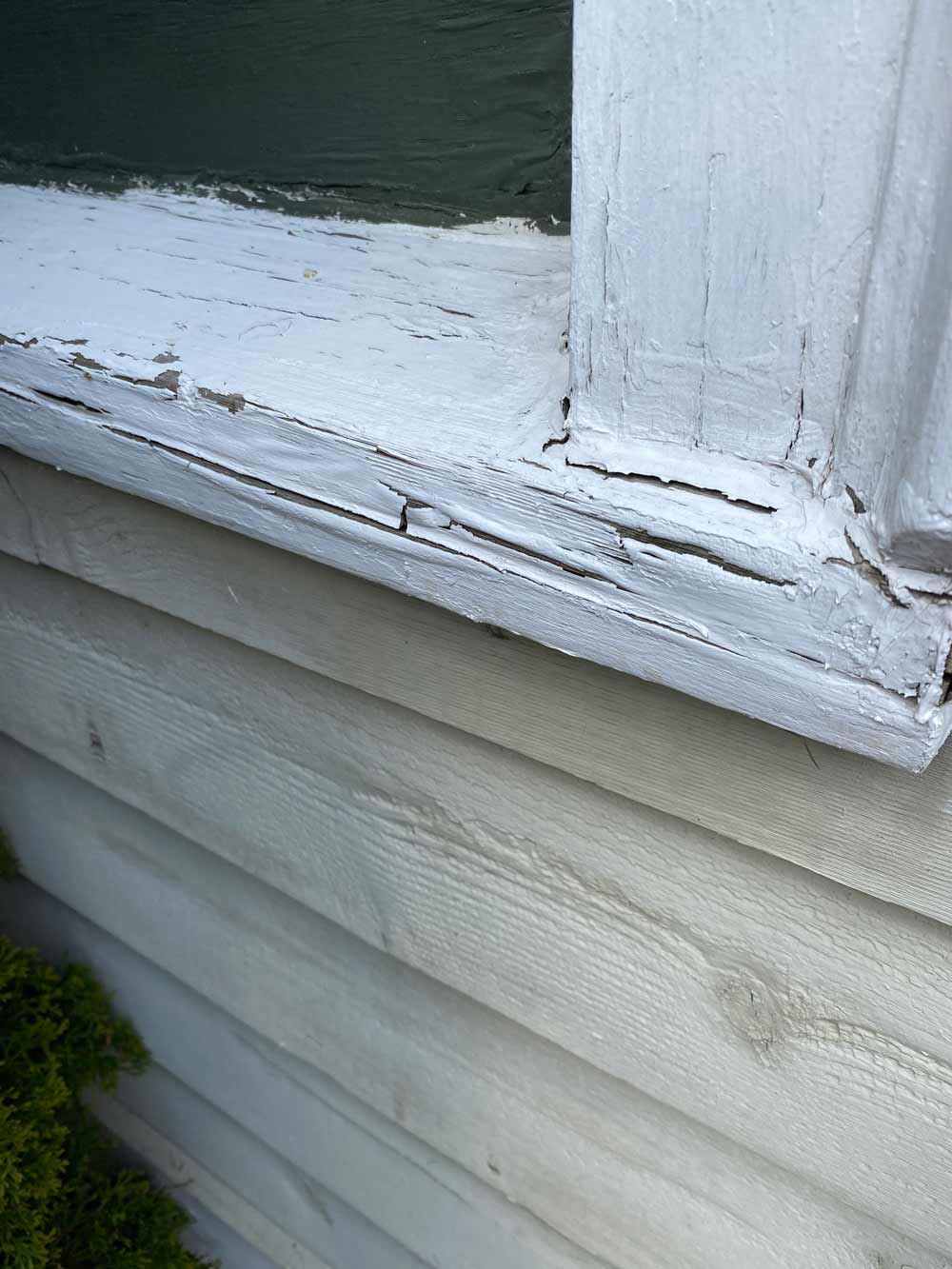
Identifying Lead-Based Paint
There are a couple distinguishing characteristics that can help you identify whether or not you have lead-based paint in your home. First, lead paint has a tendency to chip and create geometric patterns that have a scaly appearance. In addition, if you rub lead-based paint it will create a chalky substance. Examining your surfaces and looking for these traits can give you some indication of whether you have lead-based paint, but there is no substitute for a professional inspection.
Am I Required To Remove Lead-Based Paint in Ohio?
Currently, there are no laws that require homeowners to remove lead paint even if they are in the process of selling their home. In addition, homeowners are obligated to disclose the presence of lead paint to potential buyers. Buyers are also urged to schedule a lead-based paint inspection and will typically have a 10-day inspection period. If you want to know if your home is at risk, then call us today and schedule a lead inspection.
What Are the Differences Between a Risk Assessment and a Lead Inspection?
A lead inspection is generally the first step in determining whether your home or commercial property contains lead. The main goal is to determine whether lead is in or around the home by testing dust and soil samples. This process is conducted by a professional lead inspector and involves taking surface samples from the home to send for laboratory testing.
When you opt for a risk assessment, you will receive a more thorough picture of the sources of lead in the home and just how concentrated levels are in all locations. Risk assessment also involves generating a detailed report and making specific recommendations. In some cases, an inspector may recommend abatement, which involves the complete removal of lead-contaminated paints, pipes, products, and soil. In less severe cases, exposure can be minimized by a series of smaller steps.
For Ohio property owners who are interested in renovating their home or completely removing any lead-based paint, a lead inspection will be necessary. This comprehensive test determines exactly where lead is located. You will need this information in order to safely execute any demolition and be sure that you are taking all the necessary steps to reduce lead dust as you complete repairs.
What Does a Lead-Based Paint Inspection Involve?
While there are few national guidelines for testing, at Home & Commercial Inspections LLC, we use Ohio Department of Health guidelines (ODH) as the foundation for our testing protocols. Different surfaces can include collecting dust and surface samples of the following:
- Walls
- Ceilings
- Moldings
- Doors and doorframes
- Windows, windowsills, window sashes, and window frames
- Closets
- Exterior surfaces
What Do I Need To Do To Prepare for a Lead Inspection in Ohio?
Having your home tested couldn't be easier or more convenient. You don't have to worry about damage to your home or the need to prepare it for testing. It is always a good idea to move any obstructions so inspectors can easily get in and out of rooms, but there is no need to take any other measures. Call us today for a lead inspection!
Are Ohio, Lead Inspectors Required To Be Licensed?
Absolutely. All lead inspectors must complete a training process that meets both federal and state requirements. Across the country, the EPA serves as the main regulatory body for lead-related issues. It provides initial certification classes, professional development programs, and re-certification courses.
Typically, the EPA also works closely with each state's Department of Health to offer certification classes and other resources for both inspectors and the general public. The Ohio Department of Health works to educate the public about the dangers of lead poisoning.
Before you hire a company to inspect your home or commercial property for lead-based paint, be sure the inspectors are fully trained and licensed. At Home & Commercial Inspections LLC, our inspectors are held to the highest standards and licensed by the ODH. You can rest assured that you are partnering with a knowledgeable inspector who has your best interest in mind.
How Long Will It Take for a Lead Inspection in My Home?
While this can vary depending on the size of your structure, the entire lead testing process can take 2-5 days. That is all it takes to know whether your structure may contain lead paint and to begin to take steps to reduce potential hazards or remove the paint entirely. Be sure to contact us to schedule your lead inspection in OH.
How Much Does It Cost To Have My Structure Inspected for Lead Paint?
If you are thinking of purchasing an older structure , a lead-based paint inspection is a smart choice. You will want to know exactly what you are getting into and whether you want to move forward on a home that may require renovations in order to remove toxic paint. If you have any questions or concerns, feel free to contact the experts at Home & Commercial Inspections LLC for a quote. We are proud to serve property owners across Ohio by providing helpful information and inspection services that go above and beyond national standards. Don't forget to call us if you have any questions about your lead inspection.
Lead Abatement Inspection
Lead abatement is the permanent removal of lead-based paint hazards and may require specialized techniques. Abatement is sometimes ordered by a state or local government.
We are licensed lead inspectors, and we adhere to strict inspection practices. Call us today for a lead paint inspection!
Service Areas
Our lead inspections areas all major areas within Ohio, including:
Columbus
Bellefontaine
Dayton
Canal Winchester
Delaware
Lancaster
Marysville
Newark
Schedule Lead Inspection Service Now!
Call 1-800-241-1033 and ask us to do a lead inspection for your property!
Message us for Lead Inspection in Ohio
"*" indicates required fields
Lead Inspections: Testimonials
Submit your review | |
Very polite, professional and thorough! Very knowledgeable and didn't make me feel like any question was too much or too dumb. I would recommend to anyone looking for an inspection for any reason! Greg was my inspector and he did an amazing job and if I ever need this done again, definitely would ask for him!
Greg did a wonderful job on our home inspection! His inspection was very thorough and detailed. Additionally, he went above and beyond to ensure that we were knowledgeable as first-time home buyers on important aspects of home maintenance. We received our inspection report same day helping us to make a timely decision. He was friendly, personable, and extremely knowledgeable. From the booking to the services rendered, I would strongly recommend this company.
James was extremely personable, knowledgeable, and very detailed oriented. He took the extra time needed to explain all of the issues to ensure I was aware of exactly what was occurring with my home. He identified several issues and actually saved us from a future leak in our brand new roof!! I would recommend Home & Commercial Inspections 100%.
